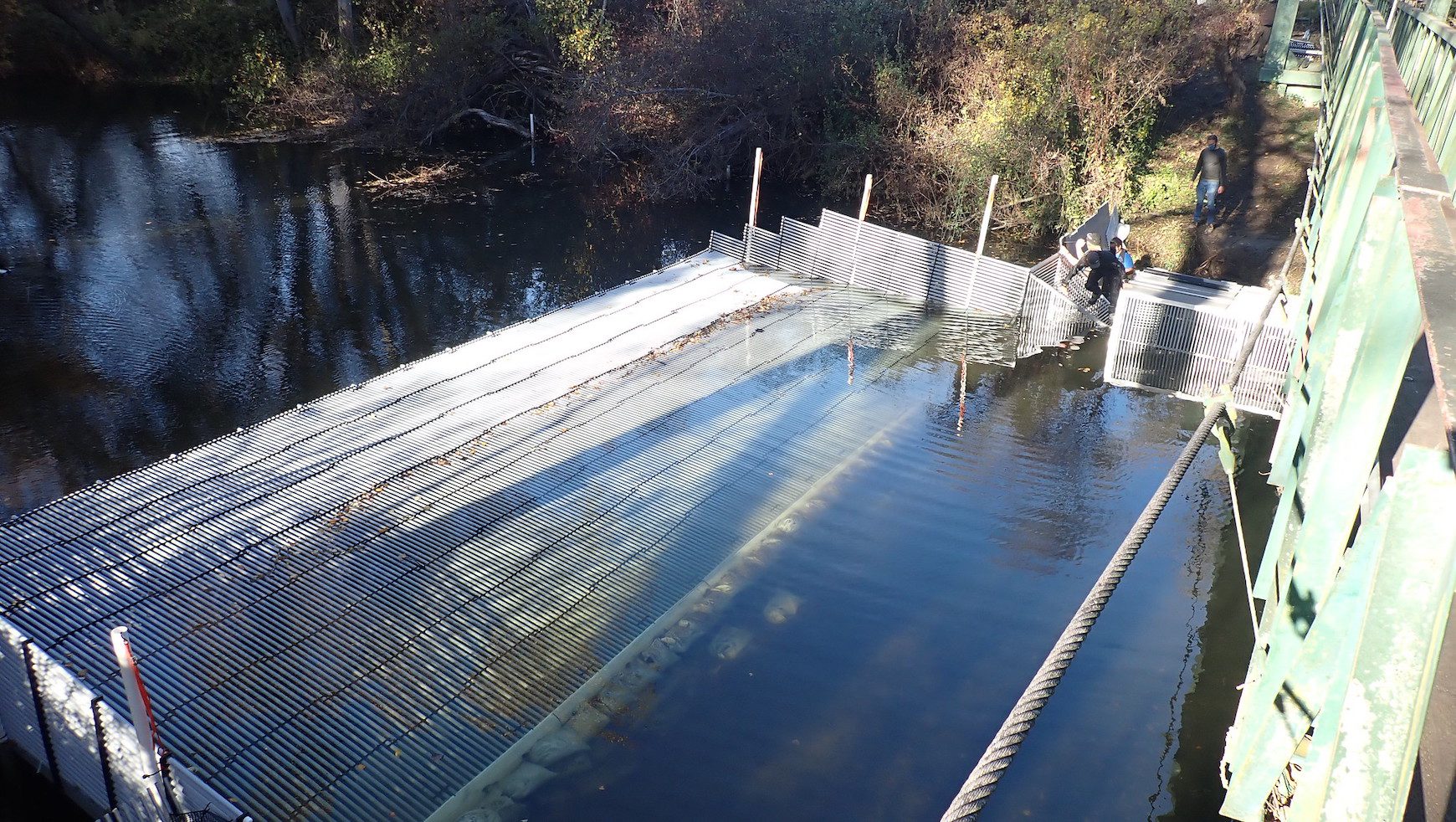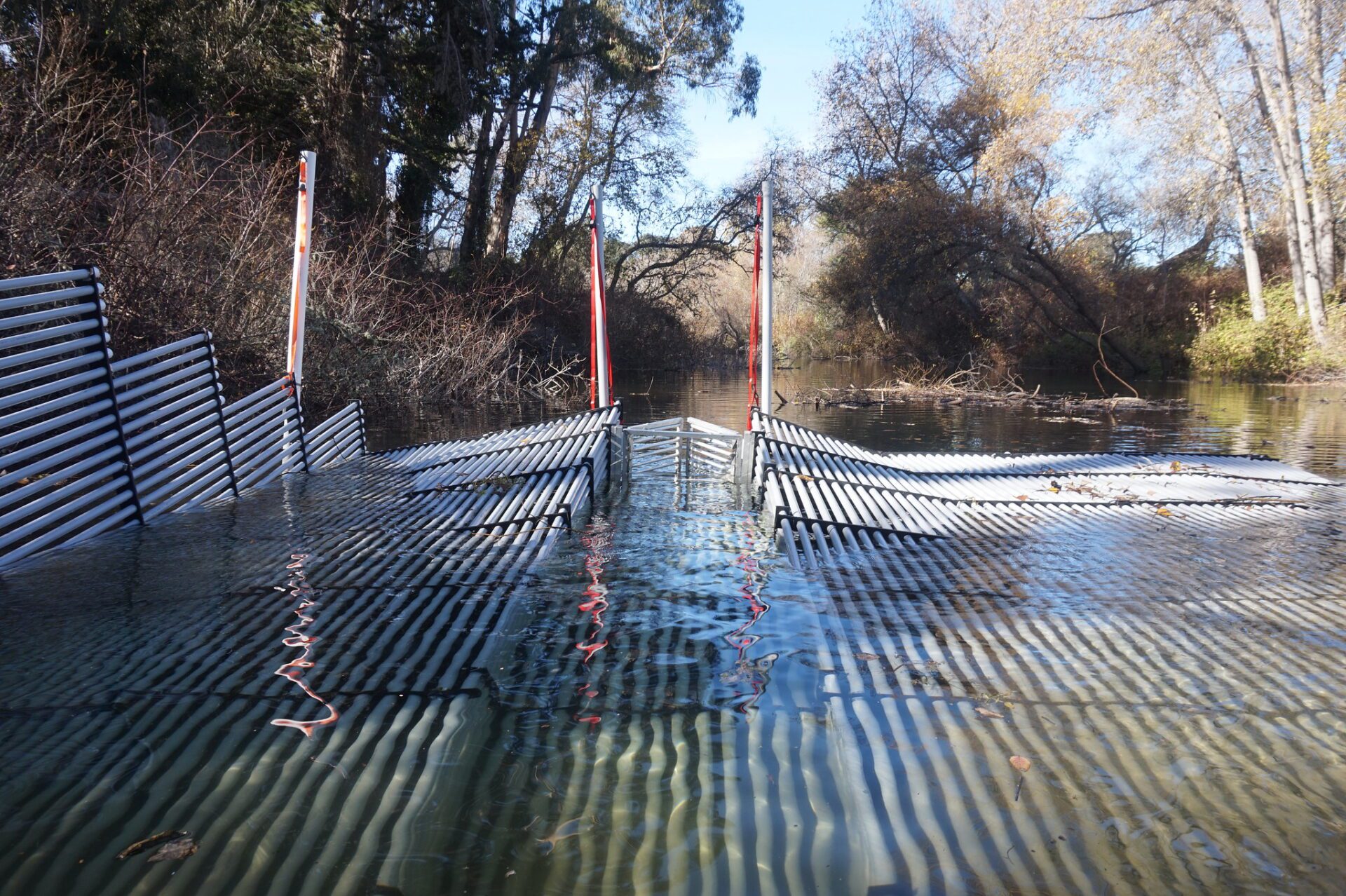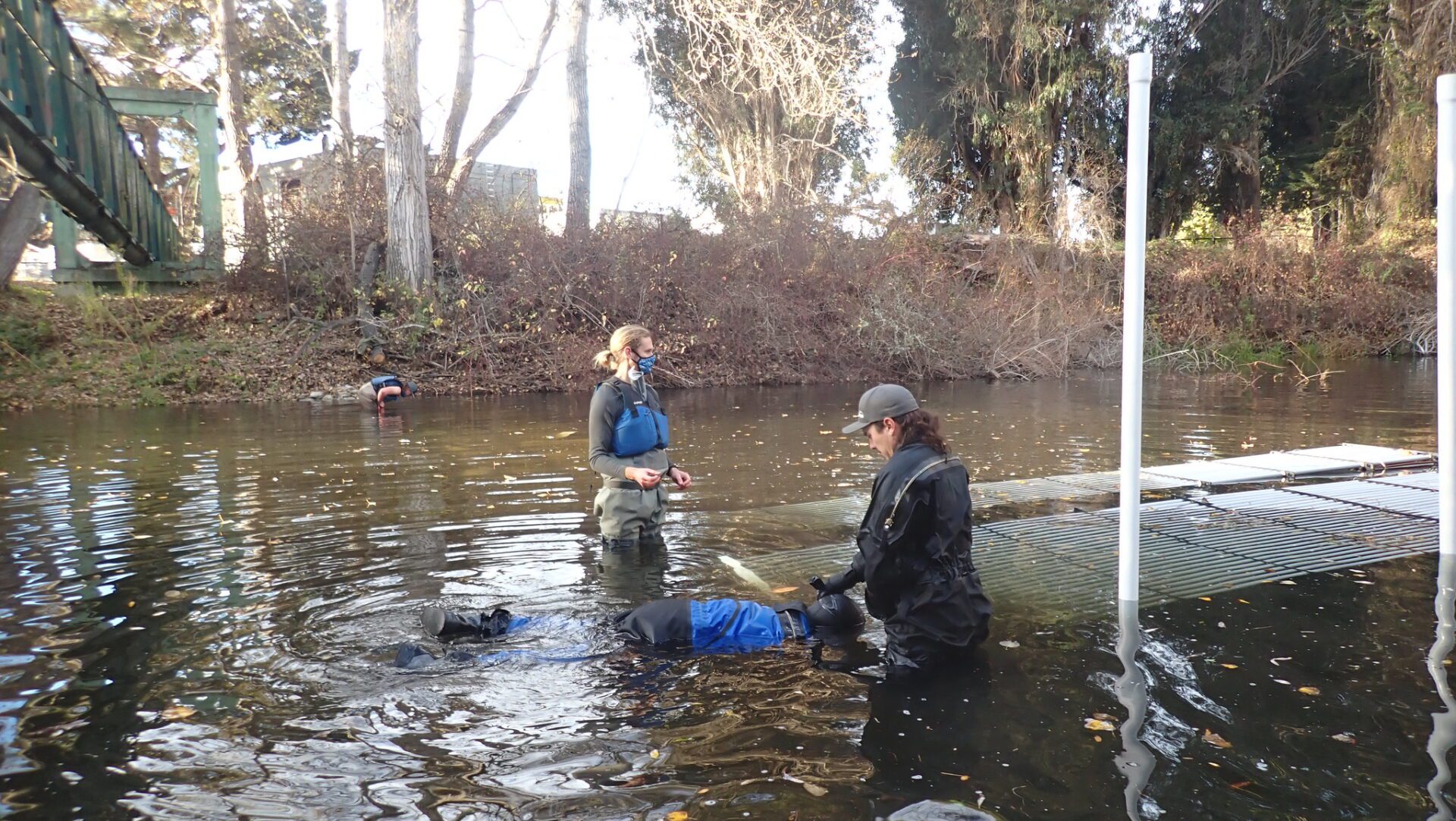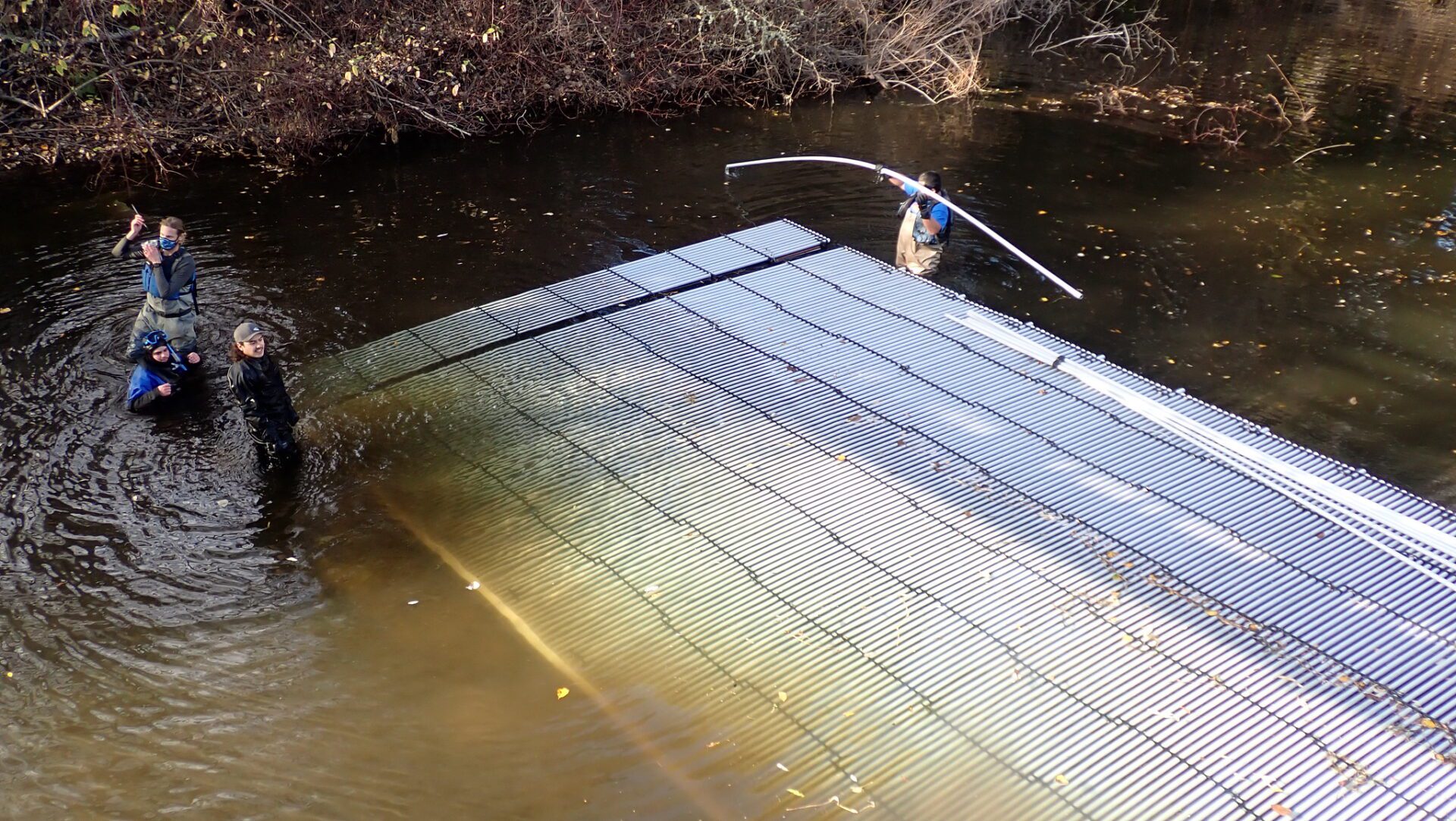


In 2020/2021, FISHBIO fabricated and installed a specially designed resistance board weir on the Carmel River for the Monterey Peninsula Water Management District (MPWMD), which intends to trap adult steelhead returning to the river to spawn and implant them with passive integrated transponder (PIT) tags. Antennas operated throughout the system will be able to detect these tags and provide data on when and where fish are moving. The weir will also help trap striped bass, a non-native predator known to consume steelhead smolts as they migrate out to sea. The weir has one-inch picket spacing – a width that blocks adult steelhead movement and channels them into the trap, while still allowing juvenile steelhead to pass through downstream – and spans the entire 75-foot width of the channel. FISHBIO built and installed the weir in December 2020 and provided training and technical support to MPWMD personnel on how to operate the structure.
Although the goal is to capture and tag adult steelhead moving upstream, it is also important to allow the adults that have completed spawning, known as kelts, to pass downstream and return to the ocean. To accommodate this, a unique design element was incorporated in the weir: a modified panel was added to create a notch with an adjustable fyke structure that allows downstream passage of kelts (shown in the photo above). If this design works well, it will be incorporated into other weirs built or operated by FISHBIO on rivers throughout California and beyond. Like a needle in a haystack, steelhead in a rain-swollen river are not easy to find. However, strategically designed tools like the resistance-board weir give biologists and managers an opportunity to capture and tag these important fish. The data from the weir and tags will help unmuddy the details of Carmel steelhead population size and movement patterns, which in turn will allow for better informed and more effective management.



